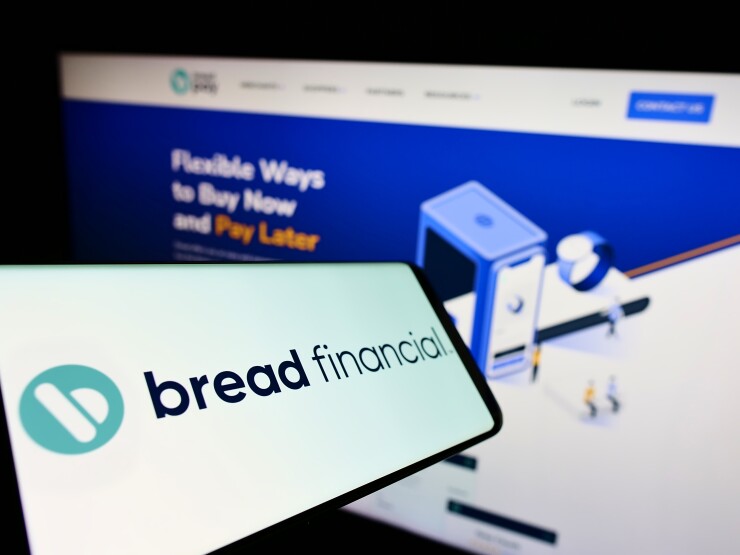
Capital One Financial says its customers' payment patterns are back to normal, which indicates that the post-pandemic worsening in credit card users' financial health is finally stabilizing.
The stable outlook at the credit card giant is an indication that — at least for some lenders — the
Loan defaults certainly rose in the fourth quarter at Capital One. The company's net charge-off rate on domestic credit cards jumped to 5.35%, up from 3.22% a year earlier. Charge-offs have risen sharply from their ultra-low levels during the COVID-19 pandemic, when stimulus funds and higher consumer savings helped cardholders stay on track.
But cardholders are now falling into delinquency status in the same seasonal patterns that were evident prior to COVID-19, so the post-pandemic worsening appears to have "run its course," said Capital One CEO Richard Fairbank.
"We feel great about where we've stabilized, and we see really a good assessment of our future," Fairbank said Thursday on the McLean, Virginia-based company's earnings call.
The upbeat outlook lines up with that of Synchrony Financial, another major credit card issuer that said it
The relatively rosy outlook at those two companies

To be sure, a worsening in the economy could put more pressure on borrowers and push up charge-offs, Capital One's Fairbank said. But so far, the U.S. consumer has remained strong, and the job market "has proven strikingly resilient over the past year, really defying the expectation of many economists in the face of rising interest rates," Fairbank said.
Capital One's stock soared more than 4% on the day after the company released its earnings report.
Jon Arfstrom, an analyst at RBC Capital Markets, wrote in a note to clients he was "encouraged by management's confidence" in the lender's outlook. The stabilization in delinquencies, or consumers who fall behind on their card payments, also gives confidence that Capital One's losses will "remain anchored to levels only modestly above 2019 metrics," he wrote.
Stephens analyst Vincent Caintic was a bit more downbeat about Capital One, telling clients that charge-offs stabilizing 15% higher than they were in 2019 "doesn't put us at ease." He also flagged the sharply higher charge-offs and delinquency figures in the fourth quarter as a sign of "increasing consumer stress."
"Although management reiterates confidence that credit has normalized, we don't see it in the data," Caintic wrote.
As Capital One's credit outlook stabilizes, the $478 billion-asset bank continues to "lean in" on growth, Fairbank said Thursday. The company reported some $147.7 billion in domestic credit card loans during the fourth quarter, up 12% from $140.3 billion a year earlier.
Marketing expenses also surged, rising to $1.25 billion during the quarter, up from $972 million during the prior three-month period.
The bank is
Ryan Nash, an analyst at Goldman Sachs, said on the earnings call that Capital One has now spent about $4 billion annually on marketing for two straight years. Other lenders, he noted, have adopted a "more cautious tone on growth."
Fairbank said Capital One has been "trimming around the edges" and cutting back on relatively riskier business, such as auto lending, over the past couple of years. But overall, the bank is "really excited about the growth opportunities across our business" and seeing traction from its investments, Fairbank said.
"We are continuing to capitalize on the opportunity as we see it," he said.





